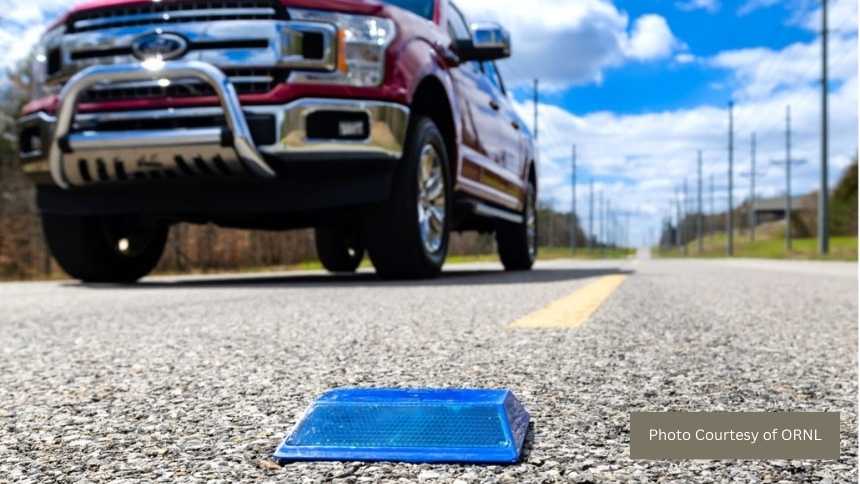
Reflective raised pavement markers can help self-driving vehicles
Working with partners, ORNL engineers are placing low-powered sensors in those markers that are already used to help drivers identify lanes.
Even as self-driving electric vehicles continue to face steep hills on the road to reliability, researchers at Oak Ridge National Laboratory (ORNL) and Western Michigan University (WMU) are working together to drive solutions from outside the car: sensors and processing embedded in road infrastructure.
Working with partners, ORNL engineers are placing low-powered sensors in those reflective raised pavement markers that are already used to help drivers identify lanes. According to a paper in IEEE Sensors by ORNL researcher Ali Ekti with lead author Sachin Sharma of WMU, microchips inside the markers transmit information to passing cars about the road shape. They are effective even when vehicle cameras or remote laser sensing called LiDAR are unreliable because of fog, snow, glare or other obstructions.
“We are working to make autonomous driving features accurate and safe in more remote areas,” Ekti said. “And we are doing it by converting a dummy piece of infrastructure into something with many more uses.”
Not only does the technology provide more accurate information about the driving environment, but it also shifts some of the processing load from the car’s software onto infrastructure. This saves electric vehicle battery power, extending driving range to promote wider EV adoption. Compared with a leading camera and LiDAR-based autonomous driving technology, the chip-enabled pavement markers can reduce navigational power consumption by up to 90 percent, the authors reported in a technical paper.
Like what you've read?
Forward to a friend!

